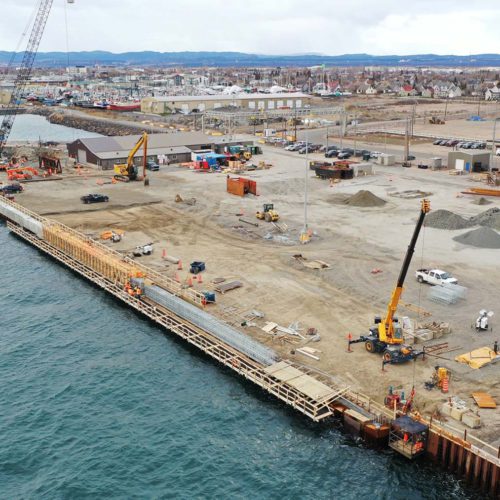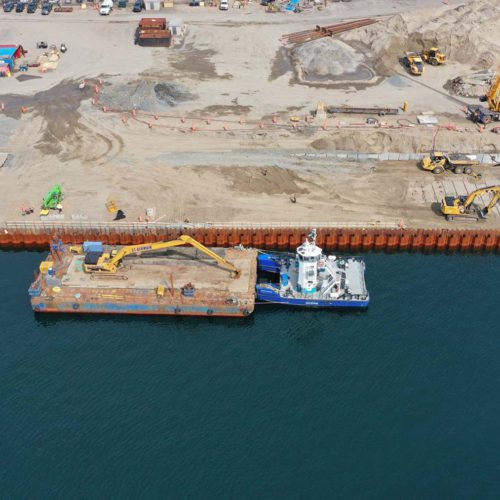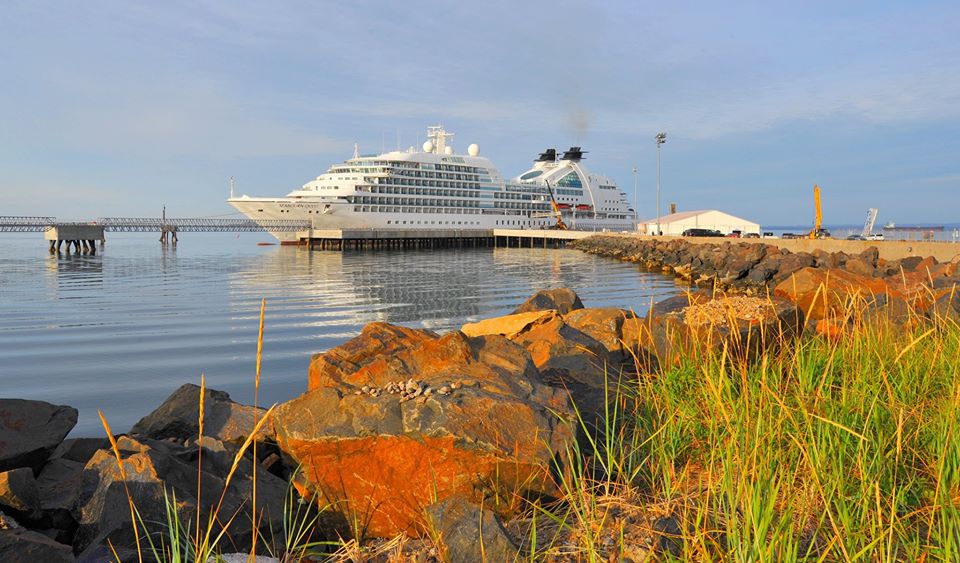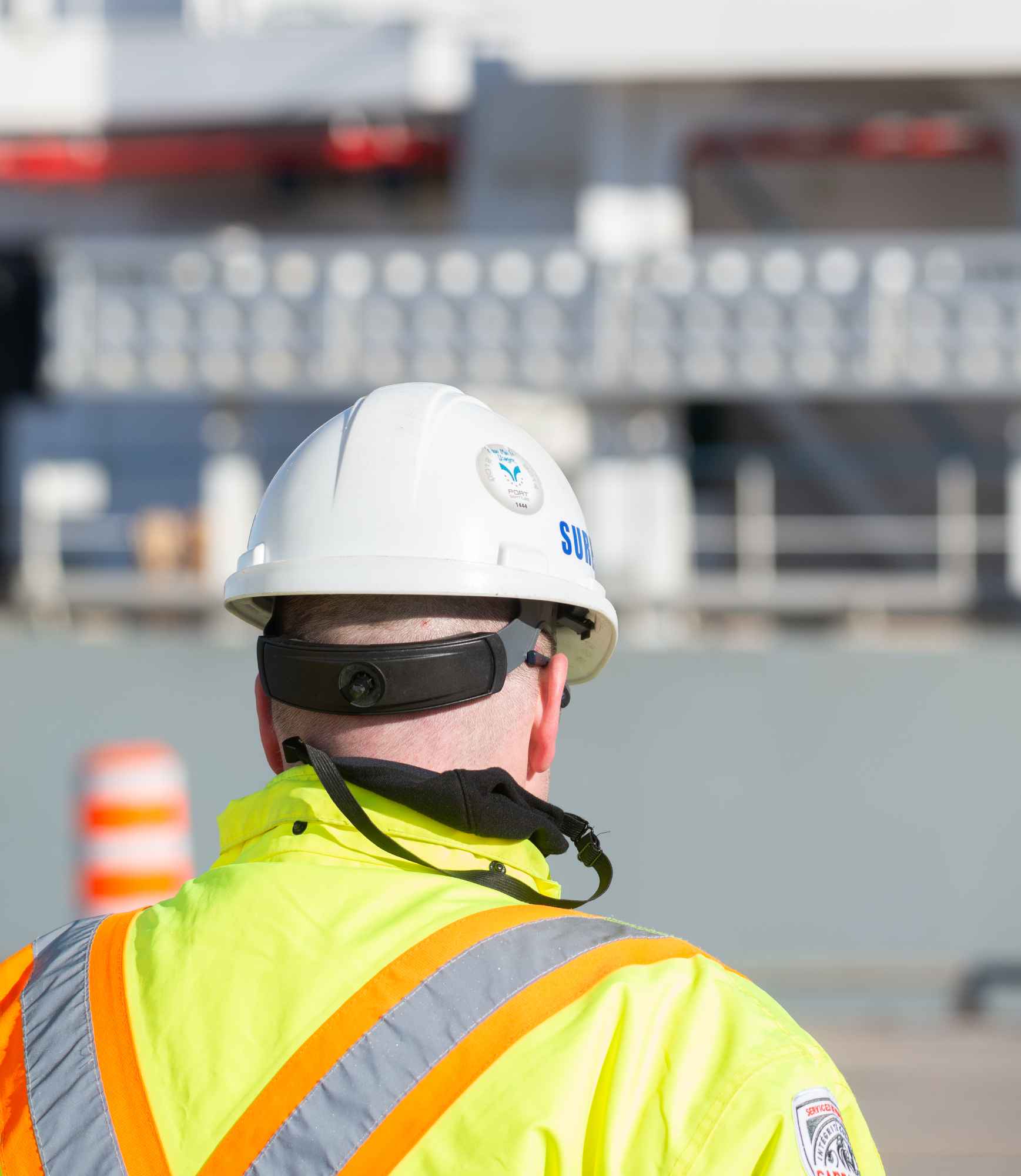Pointe-aux-Basques Terminal Upgrades

Backstory
The Pointe-aux-Basques Terminal was built in 1950 to be an intermodal facility carrying passengers and containerized cargo north. It is still a critical lifeline as the main marine terminal serving the remote villages of Quebec’s Lower North Shore.
Upgrades to the Pointe-aux-Basques Terminal will bring the infrastructure up to standard and allow it to diversify its cargo base and better meet the current demand for short sea shipping (SSS) projects—an area with strong market potential.
Once renovated, the terminal and its intermodal facilities will reduce traffic and consolidate the Port of Sept-Îles’s position as a gateway for northern projects. The upgrades will also significantly reduce GHG emissions by providing transport alternatives and maximizing the use of the seaway to alleviate heavy traffic on Route 138.
Project
description
The Port of Sept-Îles was awarded $6.7 million from the Canadian government’s National Trade Corridors Fund (NTCF) and a matching $6.7 million from Ministère des Transports du Québec’s Programme de soutien aux investissements dans les infrastructures de transport maritime (PSIITM). The Port of Sept-Îles will pitch in the final third to round out the $20 million project.
Following a call for tenders for delivery under a single design-build contract, the project was awarded to Construction LFG (Construction RIC), which will make sure the project is built to specifications.
Work will begin in mid-May 2020 and will be largely completed by fall 2020, with the finishing touches (asphalt paving) to come in spring 2021.
The work mainly comprises giving the existing quay a new front of pilings and sheet piles, replacing the upper tie rods, upgrading the defence and mooring system, extending the front by backfilling to where the jetty is now and redoing the terminal surface. Vibratory driving will be used to install the piles and sheet piles.
Site closed
to the public
A security fence will be installed around the construction site and public access to the site will be suspended until spring 2021.
Keep tabs
on the project
Follow us on Facebook for project updates and progress reports. For questions, please email the Port of Sept-Îles at env@portsi.com.
In the event of an emergency, call the Port at 418-968-1231.

Environmental
measures
The project will comply with all environmental precautionary measures established by the Port of Sept-Îles.
To ensure that the work is carried out in adherence with current environmental standards and authorizations, other project-specific mitigation measures will be implemented. For example:
- Vibratory driving will be used to install piles and/or sheet piles to reduce noise pollution.
- A cetacean exclusion zone will be in effect when driving piles and/or sheet piles by vibration. Pile driving operations will be suspended if whales are observed within 600 m of the work area and will not resume until 30 minutes after they leave.
- A trained observer will constantly monitor the pile and/or sheet pile work to ensure that the cetacean protection zone is respected.
- No pile and/or sheet pile driving will occur during hours of darkness or on days when the waves are high.
- The form welds will be checked for watertightness before casting begins.
- The concrete work will be monitored on an ongoing basis to ensure that environmental protection measures are implemented and we can respond rapidly in the event of an environmental incident.
- The excavated fill will be stockpiled for environmental characterization in accordance with regulations to ensure the quality of the soils to be put back in place. If contaminated soils are found, they will be disposed of at an authorized treatment facility. Debris will be sorted and taken to a suitable disposal site. Asphalt residue will be recycled.
- Specific measures, including stormwater and leachate controls, will be implemented to keep sediment and construction materials from being dispersed during the project.
- A spill response procedure will be established at the beginning of the job and communicated to workers. Should a spill occur, the response plan will be implemented quickly and thoroughly and the incident will be reported to the authorities immediately.
- A spill kit will be kept on site at all times and will include all equipment needed to contain a potential oil leak or accidental spill.
- Construction vehicles and equipment will be kept in good working order and inspected daily to rule out fuel and oil leaks.
- Machinery for shoreline work will use biodegradable oil that is non-toxic to the aquatic environment.
- Vehicle traffic will be restricted to designated, marked lanes.
- When transporting granular materials, truck loads will be covered with tarps to limit the spread of dust that could inconvenience other road users.
- On-road and heavy-duty vehicles will be properly maintained to limit exhaust emissions. The use of newer vehicles or vehicles equipped with emissions-reducing technologies will be prioritized.
- Idling will be prohibited except in exceptional circumstances requiring approval.
- Storage of hazardous residual materials (HRMs) will be in accordance with regulations. Separate HRM management (empty containers, soiled rags, contaminated soils, waste oils, etc.) will be carried out. All HRMs will be placed in labelled leakproof containers and stored in a designated weatherproof container located a reasonable distance (30 m) from any water body, drainage ditch, catch basin or other sensitive system.
- A waste reduction plan should organize waste management so that the various actions are prioritized according to the 3Rs hierarchy, or, in descending order of importance: reduce, reuse, recycle. Containers will be provided for sorting the different types of construction waste. The main recyclable materials are aluminum, paper (including cardboard), plastic and glass. Metals should be placed in separate containers to promote recovery.
Your cruise on this page ends here.
Choose a new destination!
Take a look at the 9 docks that make up the 5 terminals owned and operated by the Port of Sept-Îles.
Thousands of cruise passengers have disembarked at the Port of Sept-Îles every year since the Cruise Ship Dock was commissioned in 2010.
Looking for a rewarding career at one of Canada’s largest ports? Set your sights on the Port of Sept-Îles! See our job and internship openings.


